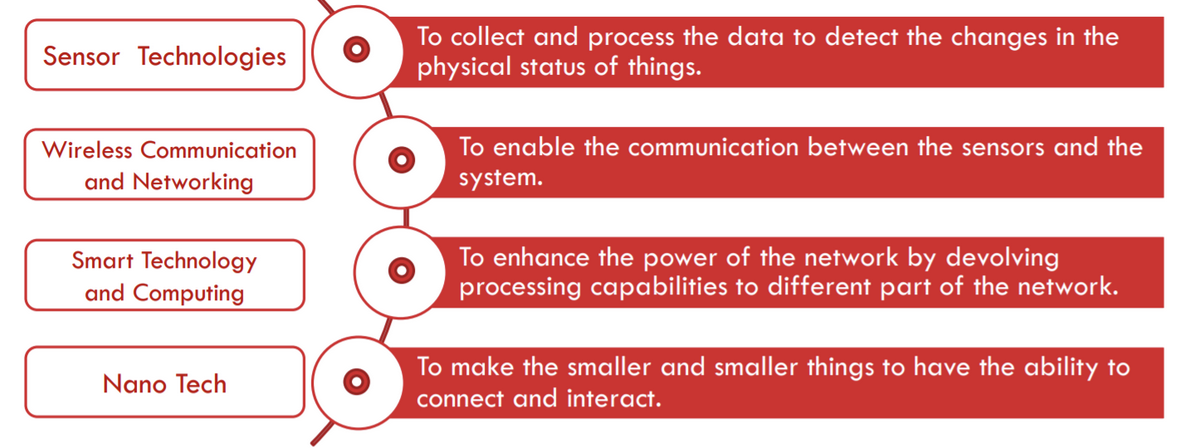Enabling Technologies
Modern technologies that have appeared in the last few years have enabled the idea of IoT for wide implementation. The IoT is enabled by several technologies that includes wireless sensor networks, sensors, RFID, cloud computing, embedded systems, communication protocols, mobile devices, web services and semantic search enginess
To operate RFID and smart sensors need the microprocessor system to do the reading, convert the data into digital format, and send it to the Internet using the communication protocol. This process can be done by small- and medium-scale computer (embedded) systems.

Picture 1. IoT technologies.
Small-Scale Computer Systems
The microcontrollers – elements that are used in small-scale embedded systems - have developed rapidly in recent times. The popularity has grown for microprocessor systems that can be easily integrated with other elements like sensors, actuators and are connected to the network. The availability of programming tools and environments supported by different companies and communities such as Arduino is an excellent example.
Medium-Scale Computer Systems
Medium-scale computers have more powerful processors, more memory and networking connectivity built in than small-scale computer systems. They can work under control of multitasking operating systems like Linux, Windows, embedded or real-time operating systems like FreeRTOS. Having many libraries, they can successfully work as hubs for local storage, local controllers and gateways to the Internet. The example of such systems is Raspberry Pi.
Internet
The wide availability of Internet and wireless networks have facilitated connecting the “thing” to the Internet. The price of cellular access (3G/4G/5G) is low and offers a very good performance of data transfer.
IP Addressing
The main paradigm of IoT is that every unit can be individually addressed. With the addressing scheme used in IPv4, it wouldn’t be possible. IPv4 address space delivers “only” 4 294 967 296 unique addresses (2^32). If you think it’s a big number, imagine that every person in the world has one IP-connected device – IPv4 covers about half of the human population. The answer is IPv6 with a 128-bit addressing scheme that gives 3.4 × 10^38 addresses. It will be enough even if every person will have a billion devices connected to the Internet.
Data Storage & Processing
IoT devices generate the data to be stored and processed somewhere. If there are a couple of sensors, the amount of data is not very big, but if there are thousands of sensors generating data hundreds of times every second, it can be handled by the cloud – the huge place for the data with tools and applications ready to help with data processing. There are some big, global cloud available for rent offering not only the storage but also Business Intelligence tools, Artificial Intelligence analytic algorithms.
Mobile Devices
Many people want to be connected to the global network everywhere, anytime having their “digital twin” with them. It is possible now with small, powerful mobile devices like smartphones. Smartphones are also elements of IoT world being together sensors, user interfaces, data collectors, wireless gateways to the Internet, and everything with mobility feature.